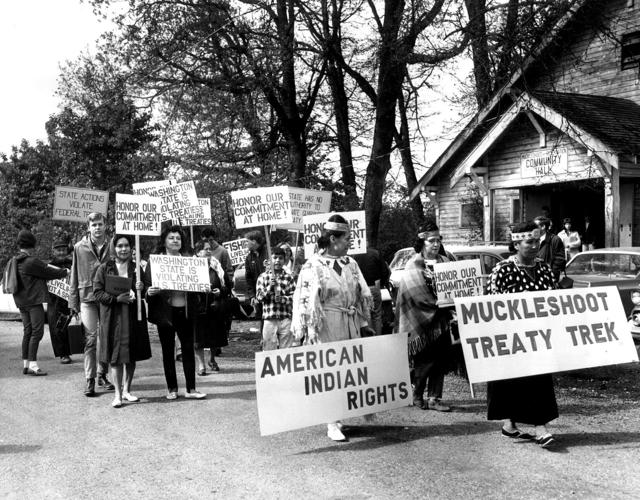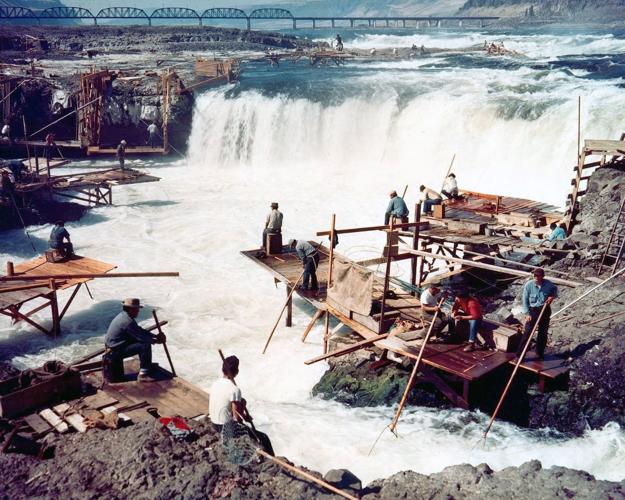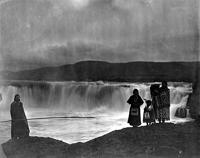On Feb. 12, 1974, as the Watergate scandal, Patricia Hearst’s kidnapping and the fire at the Kamiakin School in Sunnyside dominated the headlines, a judge issued a momentous court decision.
Known officially as U.S. v. State of Washington, it is more commonly called the Boldt decision. It not only recognized Native American fishing rights outside reservations, it also affirmed the sovereignty of tribal governments and directed tribes to have a greater say in the management of fish.
“The Boldt decision was a court decision years in the making to reaffirm Yakama Nation treaty rights for salmon,” said Emily Washines, a historian and citizen of the Yakama Nation. “Years of our fishers in court culminated in this landmark decision. They were taught to never forget what our treaty rights mean. A teaching we will continue passing down for generations.”
Pacific Northwest residents are marking the 50th anniversary of the ruling this month.
Fish have been a staple for Native people in the Pacific Northwest for millennia. Archaeological evidence shows that people were fishing for salmon at Celilo Falls 11,000 years ago, with others coming from as far as British Columbia and the Great Plains to trade goods for fish.
William Clark, when he passed through the area with the Corps of Discovery in 1806, described the falls as the “great mart” of the region, estimating that between 7,400 and 10,400 people took up either full-time or seasonal residence during the salmon runs.

Indians fish from platforms over Celilo Falls on the Columbia River along the Oregon-Washington border on Sept. 1, 1956. The platforms were washed away after the gates of The Dalles Dam were closed in March 1957, raising the water level above the falls.
While fur trappers established forts along the coast in the early 19th century, American settlers began pushing into the territory in the 1840s and 1850s, prompting the government to make treaties with the Native people to accommodate the settlers.
By “accommodate,” they meant “force Native people to give up most of their lands, move to reservations and assimilate into American culture — or else.”
One of the bones that Territorial Gov. Isaac Stevens tossed to the various tribes he negotiated with, including the 14 bands that form the Yakama Nation, was the right to fish in all streams running through their reservations, as well as at “all usual and accustomed places in common with the citizens of the Territory.”
For the Yakama, that meant being able to continue to fish at Celilo Falls, which was outside the Yakama’s 1.3-million-acre Lower Valley reservation.
For the U.S. government, letting Indigenous people continue to fish ensured they wouldn’t starve while the government forced them to learn non-Native farming techniques. Also, fishing wasn’t as big a deal for non-Native people who were more inclined to get their food through farming and ranching.
Not surprisingly, this near- laissez-faire approach to Indigenous fishing didn’t last and, like other elements of treaties, was broken.
In the late 19th century, as settlement was kicking into high gear, new arrivals were staking their claims on fishing grounds and blocking Indigenous people from going there.
In the ensuring years, Indigenous fishing rights would be alternatively affirmed or restricted in the court system, creating a crazy quilt of legal rulings. There were some victories, such as an 1887 territorial court ruling that affirmed Native people’s rights to fish where they had before and a 1905 U.S. Supreme Court ruling that affirmed Indigenous fishing rights in the face of non-Native commercial fishers’ use of fish wheels at Celilo Falls.
But the courts also allowed the state to restrict Indigenous fishing in the name of conservation and that Indigenous people had to abide the same fishing regulations as non-Natives, even though white commercial anglers were taking far more fish, greatly reducing the salmon runs before they got to traditional fishing sites.
In the 1960s, as the Civil Rights Movement was making inroads against Jim Crow laws, Indigenous people staged their own non-violent protests, conducting “fish-ins,” where Native people would go to traditional fishing sites to catch salmon without licenses or permits, and making sure there was news coverage when they were arrested. The events drew interest from Marlon Brando, who was arrested at a fish-in on the Puyallup River, and activist Dick Gregory.
Among the leaders of the movement was Billy Frank Jr., a Nisqually citizen who was first arrested for exercising his treaty rights to fish in the 1940s, when he was 14.
The protests culminated in a fish-in on the Puyallup River Sept. 9, 1970, when Tacoma police and state game officials clashed with Indigenous anglers in a violent fight.
Nine days later, Stan Pitkin, U.S. Attorney for Western Washington, filed suit against the state in U.S. District Court in Tacoma, in the federal government’s role as trustee for seven tribes. Eventually, seven other tribes would join the lawsuit, bringing the total number of Native tribes to 14, including the Yakama.
The suit argued that the state’s fishing regulations were violating the tribes’ rights under the terms of the treaties they signed with the federal government. The plaintiffs also argued that the state failed to prevent logging and pollution in traditional fisheries.
The case was heard before U.S. District Judge George Boldt, who was appointed to the federal bench by President Dwight D. Eisenhower and whose name would become shorthand for the ruling.
State Attorney General Slade Gorton, who would later represent Washington in the U.S. Senate, argued that the state’s fishing regulations applied to all anglers equally, and that the guarantee of due process in the Constitution’s 14th amendment applied to race, not treaty status. Gorton also maintained that the treaties granted Indigenous people an equal right to fish, not an equal right to the harvest.
Boldt issued his ruling Feb. 12, 1974, noting that he had carefully reviewed the text of the treaties regarding fishing rights. Boldt found that the tribes, as the holders of the original rights to the fish in the rivers and streams, had granted a limited right to settlers under the terms of the treaties they signed with the federal government.
That grant, Boldt ruled, entitled the tribes to 50% of the annual fish harvest that passed through their fishing grounds, which he ordered to be calculated based on each river and fish run.
“Because the right to take anadromous fish (fish that travel up rivers to spawn) arises from a treaty with the United States, that right is reserved and protected under the supreme law of the land, does not depend on state law, is distinct from rights or privileges held by others, and may not be qualified by any action of the state,” Boldt wrote in his ruling.
Boldt also tackled the question of whether the treaties included steelhead trout, rejecting the state’s argument to only include salmon. Boldt found that trout were not regarded differently than salmon at the time the treaties were signed and were subject to the treaty quota.
While the treaties restricted Natives collecting shellfish from beds maintained by non-Natives, Boldt found that the tribes had an equal right to hatchery-bred fish if they participated in the breeding operation, and directed the state and the tribes to work together on hatchery programs.
The state was also directed to restrict non-Indigenous fishers as needed to ensure that the tribes received their allotment of fish.
While some Native activists initially saw the ruling as taking half of the fish away from the tribes, they recognized Boldt’s ruling as an affirmation of tribal sovereignty and that the treaties were legally binding on the federal government.
Non-Natives were not so happy, to put it mildly. Boldt said in a later interview that he received “bales” of mail from those who were mad at the opinion. He was hanged in effigy from a fishing boat and non-Native fishers flouted the ruling, leading Boldt to put the fisheries under federal control to rein the violators in.
Washington appealed the case, and despite Gorton’s assurance to non-Indigenous anglers that Boldt’s ruling would be quickly overturned, it was affirmed by the Ninth Circuit Court of Appeals and the U.S. Supreme Court declined to take up the case.
The nation’s high court would further affirm the Boldt ruling in a 1979 case.
Plans are underway to install a statue of Frank in the U.S. Capitol's Statuary Hall, replacing one of Marcus Whitman.
It Happened Here is a weekly history column by Yakima Herald-Republic reporter Donald W. Meyers. Reach him at dmeyers@yakimaherald.com or 509-577-7748. Sources for this week's column include the University of Washington Law School, historylink.org, United States v. State of Washington, and the archives of The Seattle Times and the Yakima Herald-Republic.














(0) comments
Comments are now closed on this article.
Comments can only be made on article within the first 3 days of publication.